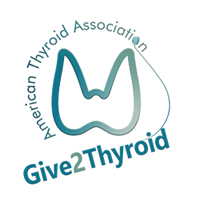SUMMARY OF THE STUDY
The study authors reviewed the records of 30 patients with amiodarone-induced thyrotoxicosis who were followed by several tests and response to therapy. All patients had thyroid function tests every 15 days during follow up and also had thyroid ultrasounds to estimate thyroid blood flow. Patients also underwent sestamibi scans with calculation of the quantity of tracer uptake by the thyroid in reference to background, resulting in the target-tobackground ratio (TBR).
The authors found that according to response to treatment, 14 out of 30 patients had AIT-1, 12 out of 30 had AIT-2 and 4 had mixed forms. Of the 14, 12 AIT-1 patients had clear diffuse uptake of the sestamibi tracer, one had increased uptake in a nodule, and one had minimal uptake, suggesting a mixed form. A total of 6 of the 12 AIT-2 patients had no thyroid uptake and 6 had minimal uptake, suggesting a mixed form. The visual results of the sestamibi scans in the four patients with mixed forms were inconsistent. When comparing the quantitative TBR of the sestamibi scans with the final clinical diagnosis, the authors were able to successfully differentiate patients with AIT-1 from those with AIT-2. However, the method was not reliable for the mixed form.
WHAT ARE THE IMPLICATIONS OF THIS STUDY?
Amiodarone-induced thyrotoxicosis is often treated with both antithyroid and steroid medications due to either unclear etiology or insufficient time for diagnostic studies to determine the type. This study demonstrates that quantifying the sestamibi uptake using TBR is very helpful in differentiating AIT-1 from AIT-2. This is important for both physicians and patients as early correct diagnosis ensures appropriate treatment and avoids overtreatment.
— Maria Papaleontiou, MD




